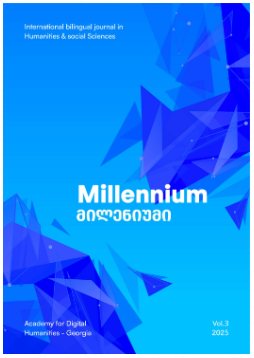თურე ნაწილაკის ფუნქციურ-სემანტიკური ანალიზი „ვეფხის- ტყაოსანსა“ და მის ინგლისურ თარგმანებში
Main Article Content
ანოტაცია
Abstract: Shota Rustaveli’s epic The Knight in the Panther’s Skin is a distinguished work of medieval Georgian literature, translated into numerous languages worldwide. The present article is dedicated to the structural and linguistic analysis of a specific verse from the epic: ḳargi sakme ḳacsa zeda azom ture ar c̣axdebis. The verse is also examined from the perspective of translation studies. The article focuses on the contextual reading of this verse within the epic’s seventeenth chapter, where it appears, typically qualified as an aphorism, in the first line of the stanza, not the last one; a structural rarity. Particular attention is paid to the particle ture, which conveys indirect evidentiality and signals the speaker’s lack of direct experience with the event. This linguistic element conflicts with the classical criteria of aphorisms, such as categorical truth and universal validity. The analysis further explores the English translations by Marjory Wardrop, Venera Urushadze, and Lyn Coffin, all of which successfully convey the concepts of goodness and its reciprocal return. However, in every case, the evidential function of ture is lost. The article concludes that despite the verse’s conciseness and moral wisdom, its linguistic specificity, namely, the presence of an evidential marker, complicates its classification as a true aphorism.
